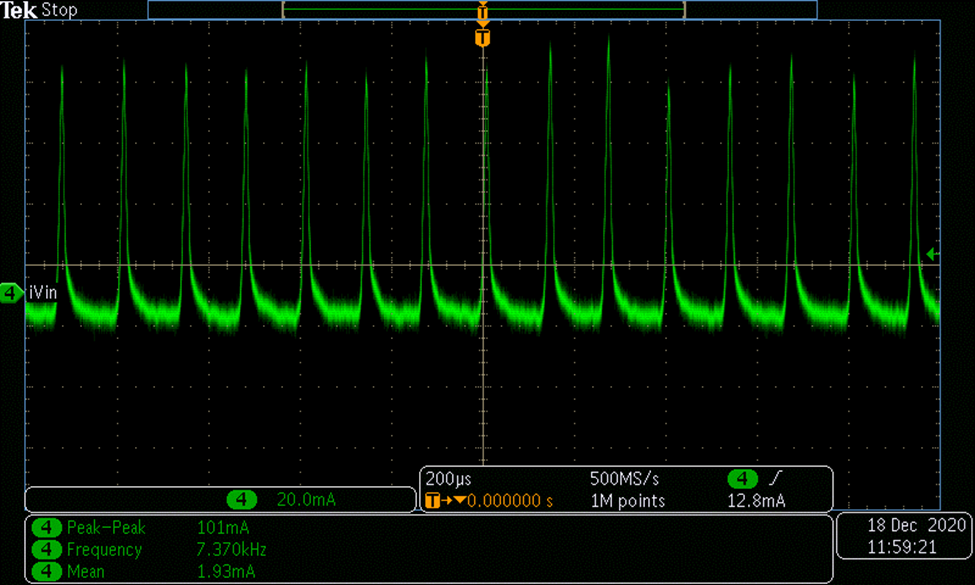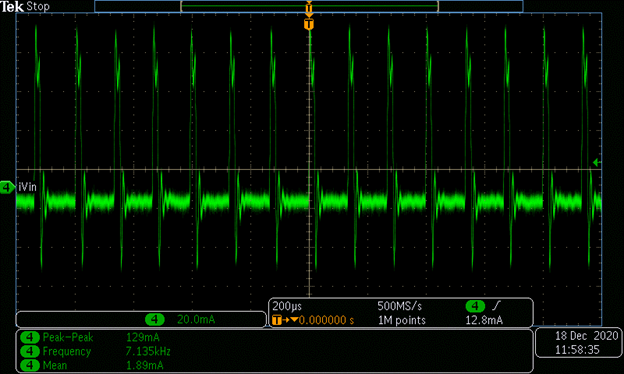Other Parts Discussed in Thread: TPS61099, TPS61071-Q1, TPS63900
Under some load conditions the TPS61099EVM-768 emits low level, audible tones.
I’d like to understand if others have observed this and how to minimize or prevent this on a design that uses the TPS61099.
The R1 and R2 resistors were changed out for R1=750 kOhm (RC0402FR-07750KL) and R2=249 kOhm (RC0402FR-07249KL) to change the output voltage to around 4.0 V.
Under the load condition of VIN=1.8 V, VOUT=4.07 V, Load=1.1 kOhm, 3.7 mA an audible tone around 8 kHz emits from the board, when the TPS61099 is in the burst mode.
The Vin current waveform has a period of 0.128 ms or frequency of about 8 kHz, which is right about where the tone is at. I used a spectrum analyzer app on my phone that shows the 8 kHz tone that aligns with the current waveform frequency and thus I’m guessing the switching frequency of the inductor.
A Keithley 2460 SMU is used to power the eval board via 3ft test leads and loading Vout with a resistor box connected via 3 ft cables.
When a different power source is used, GWINSTEK GPD-3303S power supply the audible tone is reduced but still there. The current waveform from the Keithley 2460 is different from the GW INSTEK, so maybe that’s part of the reason why the tone amplitude is different.
The real product will be powered by two AA batteries in series, which hasn't been tested yet.
Here is the 8 kHz VIN current waveform capture that produces an audible tone when the Keithley 2460 is powering the board on the 1 A range and compliance.
A Tektronix TCP0030A current probe was used to make the measurement, it is placed around the negative VIN lead.
GW INSTEK GPO-3303S power supply, audio tone lower in amplitude.
Again, the main thing I want to know is how to prevent any audible tones when using the TPS61099 part in our design.




